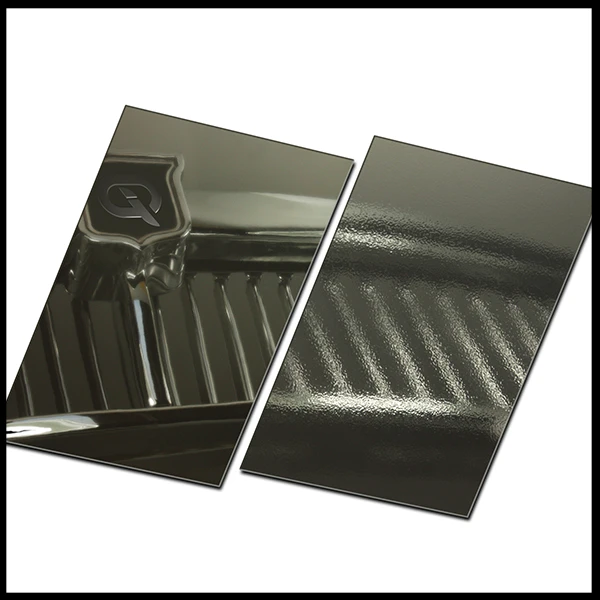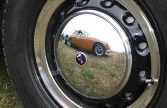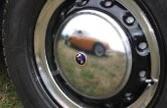การวัดคุณภาพการสะท้อนแสงของพื้นผิว

ความเงา ซึ่งวัดเป็นหน่วยความเงา เป็นตัวบ่งชี้ว่าพื้นผิวมีการสะท้อนแสงมากน้อยเพียงใด พื้นผิวขัดมันอย่างดีจะสะท้อนแสงได้มากกว่า และจะให้ค่าความเงาสูงเมื่อวัดด้วยเครื่องวัดความเงา
เช่นเดียวกับสี ความมันวาวถือเป็นลักษณะหนึ่งของรูปลักษณ์ของสี และเป็นข้อพิจารณาหลักประการหนึ่งในการดึงดูดความต้องการของผู้บริโภค นักออกแบบหลายคนนำความมันเงามาใช้กับผลิตภัณฑ์ของตนเพื่อดึงดูดลูกค้า การเคลือบสีแดงมันเงาสำหรับรถสปอร์ต พื้นผิวด้านสีเข้มสำหรับกระเป๋าสตางค์ และนิตยสารการตกแต่งภายในบ้านแบบมันเงา ความมันเงามีบทบาทสำคัญในการออกแบบผลิตภัณฑ์
ในการเคลือบเปลือกส้มไม่เป็นที่ต้องการเนื่องจากไม่สามารถสะท้อนภาพโดยรอบได้ชัดเจน เปลือกส้มคือข้อบกพร่องที่ผิวเคลือบมีลักษณะคล้ายผิวส้ม สาเหตุนี้มีสาเหตุมาจากการกำหนดสูตรที่ไม่ถูกต้องหรือการใช้งานที่ไม่ดีในกระบวนการหรือฝีมือการผลิต
เครื่องวัดความเงาอาจให้พื้นผิวทั้งสองมีค่าความเงาเท่ากัน แต่ภาพที่สะท้อนจะดูแตกต่างออกไป
ความแตกต่างของภาพและคุณภาพของภาพที่สะท้อน
ความแตกต่างของภาพ (DOI) และคุณภาพของภาพที่สะท้อน (RIQ)คือพารามิเตอร์การวัดลักษณะที่ปรากฏสองตัวที่สามารถวัดปริมาณเอฟเฟกต์เปลือกส้มได้ ทั้ง DOI และ RIQ บ่งบอกอย่างชัดเจนว่าภาพสะท้อนจากพื้นผิวได้ชัดเจนเพียงใด
หมอก
เอฟเฟกต์แสง หมอกควัน หรือการสะท้อนของหมอกควันเป็นอีกการวัดหนึ่งในการประเมินคุณภาพพื้นผิว ภาพสะท้อนที่พร่ามัวเกิดจากการที่พื้นผิวด้วยกล้องจุลทรรศน์เปลี่ยนทิศทางของแสงสะท้อน
เครื่องดนตรีเช่นRhopoint IQ-SและIQ Flexให้ผู้ใช้ประเมินคุณภาพพื้นผิวเพื่อวัดความมันเงาและวัดปริมาณเปลือกส้มและหมอกควัน Rhopoint IQ Flex ได้รับการออกแบบมาเป็นพิเศษเพื่อวัดพื้นผิวโค้งและพื้นที่ขนาดเล็ก
หากต้องการข้อมูลเพิ่มเติมเกี่ยวกับ Rhopoint IQ หรือ IQ Flex และวิธีที่สามารถช่วยคุณได้ โปรดโทรหาเราที่ +65 6895 8685 หรือเขียนถึงเราที่ssg@gcp.konicaminolta.com–


